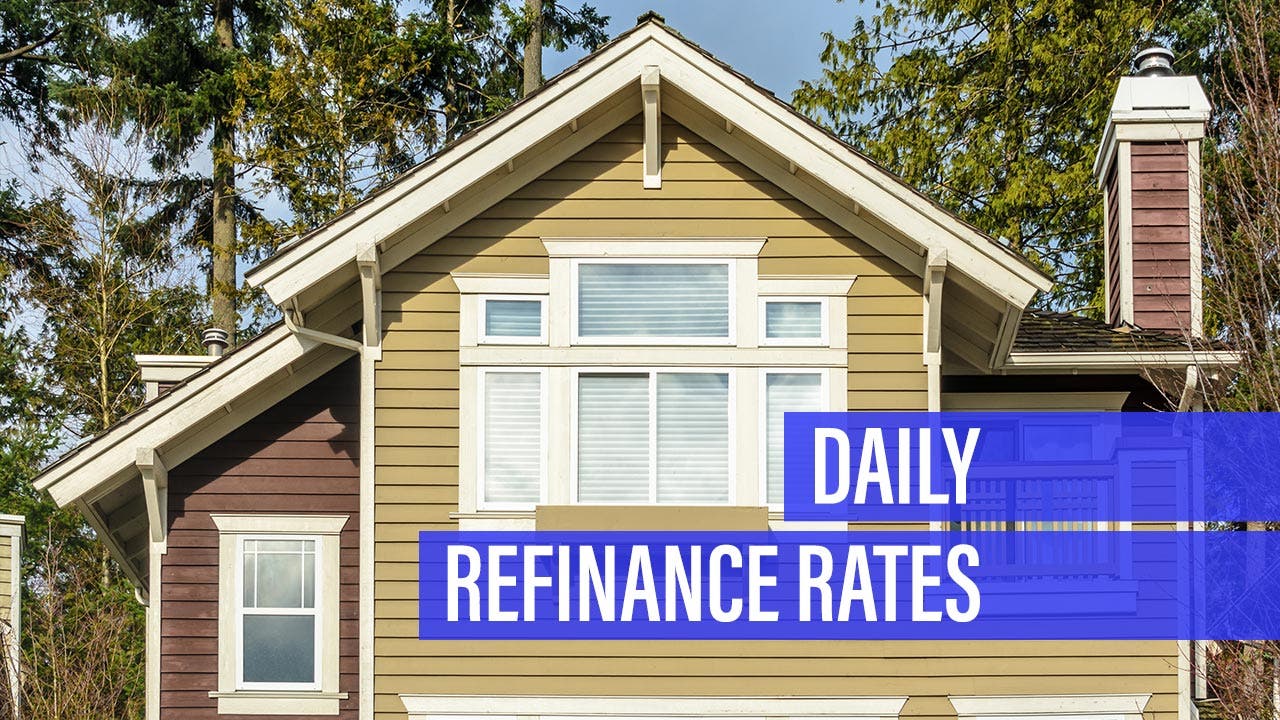
Shutterstock.com
Several closely watched mortgage refinance rates held firm today.
The nationwide average for a 30-year fixed-rate refinance held steady, but the average rate on a 15-year fixed slid down. The average rate on 10-year fixed refis, meanwhile, held steady.
Rates for refinancing are constantly changing, but, overall, they are very low by historical standards. If you’re in the market to refinance, it may make sense to lock if you see a rate you like.
See refinancing rates in your area now.
30-year fixed refinance
The average 30-year fixed-refinance rate is 3.14 percent, unchanged over the last week. A month ago, the average rate on a 30-year fixed refinance was lower, at 3.11 percent.
At the current average rate, you’ll pay $429.19 per month in principal and interest for every $100,000 you borrow.
You can use Bankrate’s mortgage calculator to estimate your monthly payments and see what the effects of making extra payments would be. It will also help you calculate how much interest you’ll pay over the life of the loan.
15-year fixed refinance
The average rate for a 15-year fixed refi is 2.54 percent, down 6 basis points since the same time last week.
Monthly payments on a 15-year fixed refinance at that rate will cost around $669 per $100,000 borrowed. Yes, that payment is much bigger than it would be on a 30-year mortgage, but it comes with some big advantages: You’ll save thousands of dollars over the life of the loan in total interest paid and build equity much more quickly.
10-year fixed refinance
The average rate for a 10-year fixed-refinance loan is 2.62 percent, unchanged over the last seven days.
Monthly payments on a 10-year fixed-rate refi at 2.62 percent would cost $948.17 per month for every $100,000 you borrow. If you can manage that hefty monthly payment, you’ll enjoy even more interest cost savings than you would with a 15-year term.
Where rates are headed
To see where Bankrate’s panel of experts expect rates to go from here, check out our Rate Trend Index.
Want to see where rates are right now? Lenders nationwide respond to Bankrate’s weekday mortgage rates survey to bring you the most current rates available. Here you can see the latest marketplace average rates for a wide variety of purchase loans:
Rates as of September 7, 2020.
Want to see where rates are right now? See refinance rates for a variety of loan options here.
When to lock a mortgage refinance rate
When you lock in a refinance rate, you freeze the rate your lender offers you for a specific period of time. A rate lock will secure that rate between the time you apply for the refinance and when you close on it.
What influences mortgage refinance rates
Economic factors such as inflation and unemployment can impact refinance rates. Generally, higher inflation leads to higher interest rates. The opposite is true; lower inflation typically leads to lower refinance rates. The dollar loses value when inflation rises. That, in turn, drives investors away from mortgage-backed securities (MBS), causing the prices to decrease and yields to increase. When yields move higher, refinance rates get more expensive.
A strong economy usually means more people buying homes, which drives demand for mortgages. This increased demand can push rates higher. The opposite is also true; less demand can trigger a drop in rates.
Current refinance rate landscape
Refinance rates have been volatile since the COVID-19 pandemic upended the U.S. economy, but overall they have been very low. Mortgage rates are rising and falling from week to week, as lenders are inundated with forbearance and refinance requests. In general, however, rates are consistently below 4 percent and even dipping into the mid to low 3s. This is an especially good time for people with good to excellent credit to lock in a low rate for a purchase loan. However, lenders are also raising credit standards for borrowers and demanding higher down payments as they try to dampen their risks.
Methodology: The rates you see above are Bankrate.com Site Averages. These calculations are run after the close of the previous business day and include rates and/or yields we have collected that day for a specific banking product. Bankrate.com site averages tend to be volatile — they help consumers see the movement of rates day to day. The institutions included in the “Bankrate.com Site Average” tables will be different from one day to the next, depending on which institutions’ rates we gather on a particular day for presentation on the site.
To learn more about the different rate averages Bankrate publishes, see “Understanding Bankrate’s Rate Averages.”
Other daily news articles:
"current" - Google News
September 08, 2020 at 06:32PM
https://ift.tt/32aY0fH
Current Refinance Rates, September 8, 2020 | Rates mixed - Bankrate.com
"current" - Google News
https://ift.tt/3b2HZto
https://ift.tt/3c3RoCk
Bagikan Berita Ini
















0 Response to "Current Refinance Rates, September 8, 2020 | Rates mixed - Bankrate.com"
Post a Comment